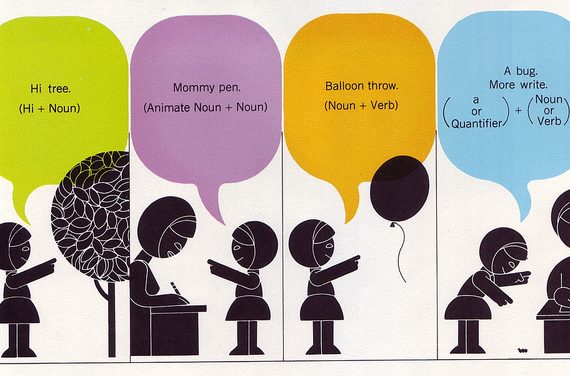
What is it?
The direct method consists of teaching a new language using only the target language. It teaches concepts and vocabulary through mime, real-life objects and other visual elements. Grammar is taught inductively, which means that learners find out the rules of the language from examples and interacting with it.
This method focuses on communication and is based on the assumption that you should experience a new language in the same way as you experienced your mother tongue. The essentials are: a) no translation b) concepts are taught through visuals and association c) grammar is taught indirectly. The key idea behind this method is that you can “absorb” the target language without referring back to your native language. Inlingua (offline) or Rosetta Stone (online) would be examples of programs based on this method.
Classroom Techniques
1. Question-answer. The teacher asks questions and rephrases students’ answers so that they can self-correct.
2. Dictation. The teacher chooses a graded text and reads it aloud.
3. Reading aloud. Students take turns reading a passage or dialogue aloud.
4. Conversation practice. Students ask questions to the teacher or other students.
5. Writing. Students write a paragraph in their own words.
Example
Let’s imagine we are learning German. A typical question-answer exchange would be:
Teacher: Ich heisse Klaus. Wie heisst du?
Student: Ich heisse (your name).
Teacher: Ich wohne in Berlin. Wo wohnst du?
Student: Ich wohne in (your city).
Through this simple exchange students learn how to say their name and where they live in an indirect way, without need for a grammar explanation. You would experience the same type of learning if you traveled to the target country and learned certain words and expressions thanks to the context.
Take this quiz for further clarification.
Criticism
However, not everything in language is as straightforward as in the example above. As grammar structures and vocabulary get more complex, it becomes difficult to sustain this level of scaffolded learning. Since adults turn to their metacognitive strategies to learn a L2, they also need explicit instruction to draw on their explicit learning skills (DeKeyser, 2000). The direct method overemphasizes and distorts the differences between child language acquisition and adult language learning, overlooking the fact that adults have already acquired a L1, which causes interferences.
It all depends on whether and how the context helps you understand the language. Through mime and visual elements some teachers and online programs manage to make you learn a language inductively, but it also requires a certain level of analytical thinking on your part, especially depending on the L1-L2 linguistic distance.
Unless combined with some sort of form-focused instruction, the direct method would be like throwing yourself into the ocean to learn how to swim. It would suit those people with a talent for language, leaving mainstream students behind.
Fortunately, there are more scaffolded ways to learn a language. The key is to find a method that lays strong foundations in a L2 so that you can proceed from easy to difficult, not the other way round. Stay with me on our journey to find it.
Related answers:
- How do I avoid the translation barrier when learning English?
- What are your favorite language learning techniques?
- Is immersion the best way to learn any foreign language?
Sources
DeKeyser, R. (2000). The Robustness of Critical Period Effects in Second Language Acquisition. Studies in Second Language Acquisition, 22, 499–533.




